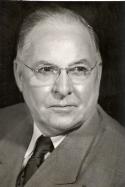
Dr. Doak S. Campbell
Stars of Yesterday - Doak Sheridan Campbell
By Jim Joanos
For the second year in a row, the Florida State University athletics program will have all nineteen of its intercollegiate teams participate in post season national competition. That was assured when the softball team won the Atlantic Coast Conference tournament and thereby earned an automatic bid to the National Collegiate Athletic Association's tournament. The accomplishment brought about a lot of celebrating and hand-slapping among FSU folks for the prestige that the accomplishment means. Lots of people deserve lots of credit but there is one special person who is very deserving but is not here to enjoy the hoopla: FSU's former president, Doak S. Campbell. It was Dr. Campbell as President of the university when it transitioned from a women's college into a coeducational university who had the wisdom to understand the importance of a well rounded and competitive intercollegiate athletic program.
 |
Dr. Doak S. Campbell |
Campbell became president of Florida State College for Women in 1941. At the time the institution had about 1800 students and although quite small by today's standards as FSU currently boasts about 40,000 students, was one of the largest women's colleges in the country. Soon after his arrival in Tallahassee, in December 1941, the Japanese bombed Pearl Harbor bringing about the United States' entry into World War II. Consequently, for the first five years of his tenure, Campbell's role was pretty much maintaining the status quo of a prestigious women's college during war times.
When the war ended, Campbell took on a vastly different responsibility. Existing facilities were inadequate to provide for the thousands of returning soldiers and sailors who thanks to the G.I. Bill would have the financial means necessary to obtain college educations. It was decided that FSCW could be expanded to provide for male as well as female students. By the Spring of 1947, it became more than a temporary arrangement when the Florida legislature by law made the institution a coeducational one and named it "The Florida State University." It thus became Campbell's duty to transition the modest women's college into the coeducational university that was destined to be a leader among educational institutions.
One of the first major decisions that had to be made was the importance to be placed upon intercollegiate athletics in the new arrangement. Despite resistance, Dr. Campbell was convinced that a well rounded intercollegiate athletics program was necessary and almost unbelievably in that very first year, FSU fielded six male intercollegiate athletic teams in football, basketball, baseball, tennis, golf, and volleyball. Two more sports, track and filed and swimming and diving, were added to the list during the second school year (1948-49) and men's gymnastics was added to the list in the 1949-50 school year.
Dr. Campbell retired following the 1956-57 school year. Years later commensurate with the changing times and federal requirements, FSU added a number of women's intercollegiate athletic teams. However, it is interesting to note that since Campbell's tenure, with the exception of cross-country and indoor track and field which were natural off shoots of the track and field program previously established, no new men's intercollegiate sports have been added to the program. Quite to the contrary, two men's sports, volleyball and gymnastics were dropped shortly after his retirement. Consequently, it is fitting to give a lot of credit to Dr. Campbell for leading the way to the comprehensive and successful intercollegiate athletic program that exists today at FSU.
It was also very fitting that in 1950 when FSU's football stadium was built while he was the university's president that they named it for him. In its original form, the stadium seated 15,000 and cost $250,000 to build. A writer (Lemoyne Cash) for The Florida Times Union at the time of the stadium dedication described Campbell as "a well-poised man who can face legislative committee sessions, meetings of his 400-plus faculty or a gathering of his 6,000 strong student body without a quiver." As FSU has progressed through the years that stadium has been transformed into the multi million dollar facility that will accompany 83,000 plus folks.
Campbell was born on November 16, 1888, in Waldron, Arkansas. Following his high school graduation, he obtained a license and taught school briefly at age sixteen. He then entered college at Ouachita Baptist College in Arkadelphia, Arkansas, where he got a Bachelor of Arts degree in 1911. By 1916, he was teaching chemistry at Central College in Conway, Arkansas. He later became president of Central and guided its conversion into a well respected Junior College. In the 1920's he began attending George Peabody College for Teachers and got a Master's (1928) and a Doctor's (1930) degrees. After which, he taught at that institution and eventually served as its Dean of the Graduate School (1938) until his appointment to FSCW. After his retirement in 1957 he and his wife, Edna, remained in Tallahassee until his death in 1973 at age 84.
Among my fond memories of Dr. Campbell was the night that the football team awarded him a letter sweater in recognition of his support. He was very happy. His orientation speech to my freshman class is also vivid among my remembrances. He emphasized the special emphasis that he placed on the spirit of the FSU campus. He began his speech with the proclamation that "This is a friendly campus." By the time he sat down most of us understood that FSU was a good place to be. Thank you, Dr. Campbell, for all that you did for FSU.